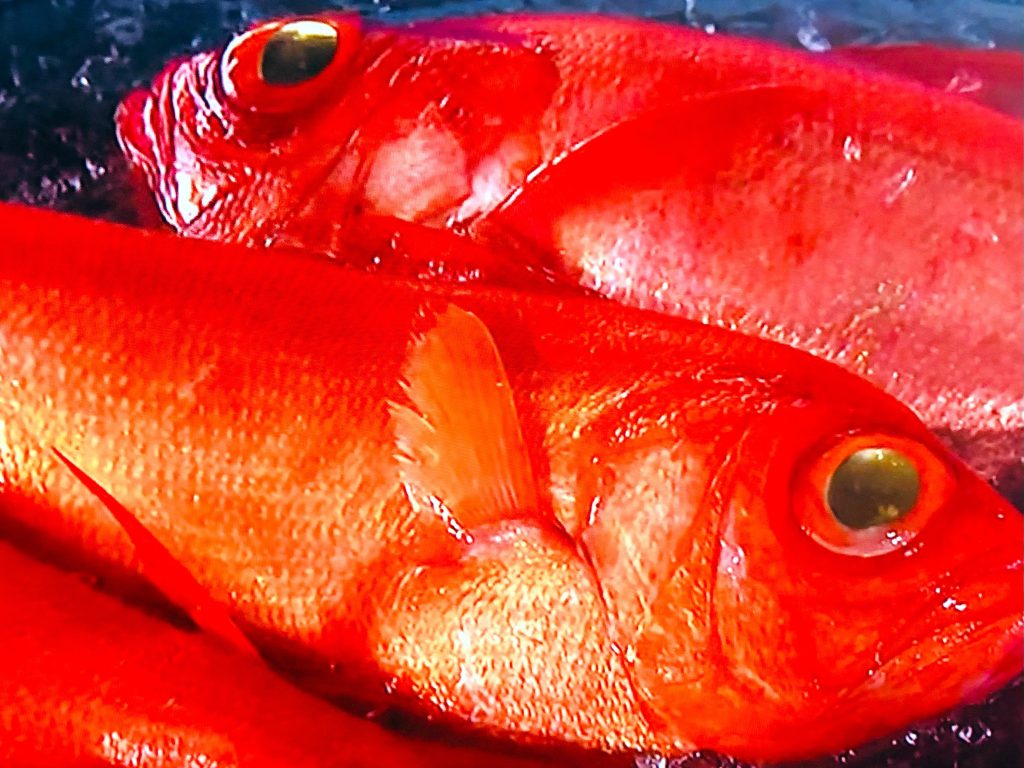
At the fish market, the standout presence is Kinmedai (the golden sea bream). Its vivid red hue is so striking that one wonders where such a vibrant color comes from. In reality, this color develops over time after being caught. While swimming alive in the sea, it exhibits a cherry blossom-like pink, resembling the true sea bream. Immediately after being caught, only the back turns red, with the overall body appearing silver.
Kinmedai are widely distributed worldwide, but major production areas in Japan include Shizuoka, Kanagawa, Chiba, Tokyo, and Kochi. The highest catch volume is at Shimoda Port in Shizuoka, where individually caught specimens are branded as ‘Jikinme’ or ‘Toro Kinme,’ establishing them as premium Kinmedai.
Being a deep-sea fish, Kinmedai have a rich flavor throughout the year, but their fat content peaks from December to February, enhancing their sweetness. Additionally, from June to August in the summer, the flesh tightens, offering a refreshing taste, making these months along with winter considered the prime season for Kinmedai.
Nevertheless, savoring it locally is unparalleled. Especially, thinly sliced and enjoyed with soy sauce and wasabi, Kinmedai is a culinary delight.
魚売り場でひときわ目立つのが金目鯛です。どこからこんな赤い色素が出るのかと思われる位鮮やかな赤さです。実はこれは釣り上げられたあと時間が経つとともに変色したものです。生きて海の中を泳いでいるときは真鯛のような桜色をしていて、釣り上げた直後には、背中だけが赤く、全体的には銀色をしています。金目鯛は世界中に広く分布していますが、日本の主な産地は静岡県、神奈川県、千葉県、東京都、高知県の1都4県です。水揚げ量がもっとも多いのは静岡県伊豆の下田港で、一本釣りされたものは「地金目」とか「トロ金目」と呼ばれてブランド化されており、高級金目鯛として扱われています。金目鯛は深海魚なので一年を通して脂が乗っていますが、特に冬の12月~2月の時期はいっそう脂が乗っていて甘みが増します。また、夏の6月~8月の時期は、身が引き締まり、さっぱりとした味わいがあり、冬と合わせて金目鯛の旬だといわれています。しかし何といっても地元で食べるのが一番で、特に、薄くスライスして醤油とわさびで食べる金目鯛は最高です。
